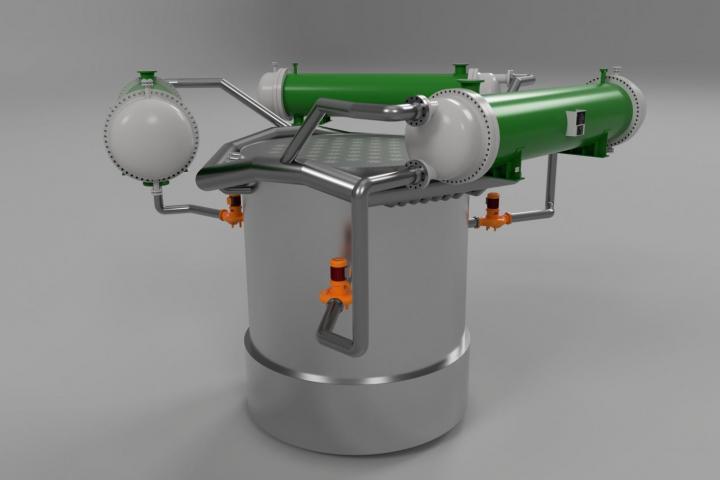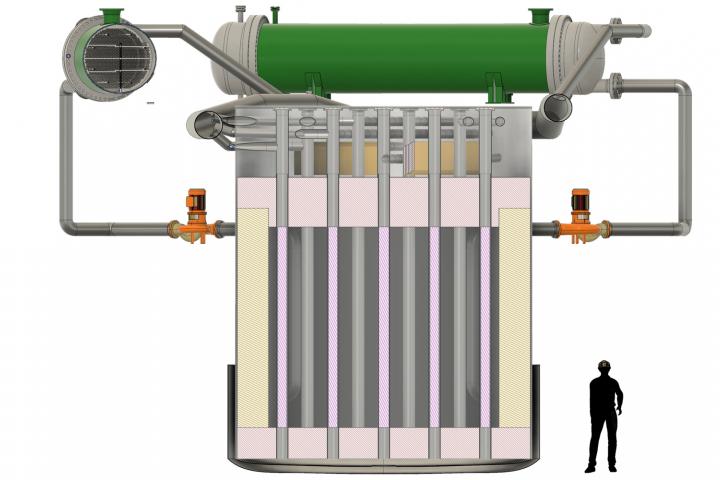
The Czech republic is due to end coal burning in 2038 at the latest. Heating plants are currently counting on the transition to natural gas and biomass, which means high investments and more expensive heat. There is a risk that consumers will switch from centralized systems to small domestic gas boilers. These are not subject to such strict emission regulations and, in summary, may become a worse polluter than controlled large sources. In addition, higher gas consumption will push up its price.
"The Teplátor is such a large pressure cooker that connects to the energy storage," describes the project chief doc. Ing. Radek Škoda, Ph.D., from the Czech Institute of Informatics, Robotics and Cybernetics of the Czech Technical University. The whole device measures about 6 times 6 meters. Its output can range from 50 to 200 MWt, and can use both spent nuclear fuel and conventional fuel rods supplied to nuclear power plants.
The advantage of the Teplator is also its ability to process nuclear waste, which is now stored in secure interim storage facilities in Dukovany and Temelín. There are about 20,000 spent cells in the Czech Republic and they would be enough for heating throughout the country for thirty years. "Today's nuclear reactors developed in the 1960s are only able to use about five percent of the energy from the fuel, 95 percent of which remains in the burnt-out cells," adds Doc. Škoda.
The authors of the project claim that whether the Teplátor is filled with nuclear waste or "fresh" fuel, the price of the heat produced will always be lower than from natural gas. Now the scientific and technical team is trying to introduce the concept to potential investors and also to reach for subsidies for the transition from coal to cleaner technologies. European funds do not yet count on nuclear support at all.
According to doc. There are several engineering companies in the Czech Republic that are able to produce Teplátor. "Compared to conventional reactors, this is a significantly simpler technology, whoever can build a brewery or a chemical plant, can produce a Teplátor as well. Production must be approved by the State Office for Nuclear Safety. "
The idea of using nuclear in the heating industry is not entirely groundbreaking. Already 50 years ago, small reactors in heating plants were considered, but then they had no chance to compete with cheap coal, so they never got into practice. Larger reactors then prevailed in production of electricity.
